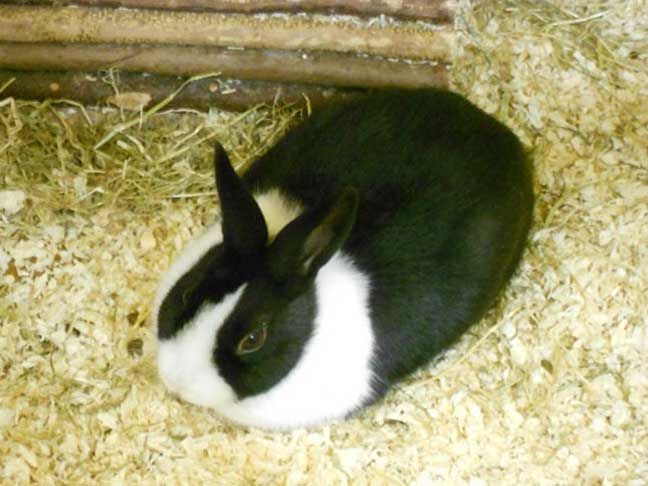While some people keep rabbits outdoors, others have house rabbits and whichever way you choose depends on your own personal preference. In this short guide we will look at how to get started with both kinds of pet rabbits.
Indoor Rabbits
Indoor rabbits can be kept singly or in pairs, depending on how much time you will be able to spend with them. A single rabbit will require more interaction from its owners, to prevent it becoming bored, but can also be a loving and gentle companion. Your house rabbit will need a cage, so it has its own space to sleep in and retreat to and while many rabbit cages have wire mesh bases, it is safer for the rabbit to use a hard base such as wood, as mesh can be uncomfortable.
Taming and litter training a house rabbit should begin with them in their cage. When you first bring your rabbit home allow it time in its cage to get used to the noises and smells of life in your home. Rabbits usually choose a corner of the cage to go to the toilet in so that corner is where you should place the litter tray. Rabbits can quickly become accustomed to using litter, just like cats do. When you allow your rabbit out of the cage, try to spot when they look like they’re about to go to the toilet and encourage them into the litter tray. Eventually rabbits will get used to using the litter while they’re out of their cage with you.
Approach your rabbit from the front, and allow it to smell your hand before you stroke or pick it up. Always reward your rabbit with treats for allowing you to pick it up and eventually the rabbit will gain trust in you.
Outdoor Rabbits
An outdoor rabbit needs a comfortable hutch with a run so they can get some exercise and preferably a playmate. Outdoor rabbits are great in pairs (if your rabbits are the opposite sex you will obviously need to have them neutered). They are sociable creatures and, even if you intend to handle and play with them, they will appreciate sharing their space with a companion.
The main problem with outdoor rabbits is digging. Rabbits do tend to dig, so if you have your run on grass you will need to keep an eye on whether they are tunnelling. Putting mesh on the bottom of a run can stop this but is not recommended as it can injure the rabbits’ feet and claws. It is best to have a run on paving slabs or concrete, and ensure there is a good supply of hay and fresh greens, and that the rabbit is allowed to play (supervised) on the grass if you have a lawn.
Outdoor rabbits should be taught to get used to being handled in a similar way as indoor rabbits, building their confidence and trust.
Rabbits Overall
Rabbits can live for eight years or more, so they are definitely a long term commitment. As they require attention, fresh food and water, consideration should be given to what you will do when you go on holiday (many catteries also take rabbits if you don’t have a friend who can care for them). As long as you are prepared to spend time getting your rabbit used to human interaction you can look forward to many years with a fun and rewarding pet.








